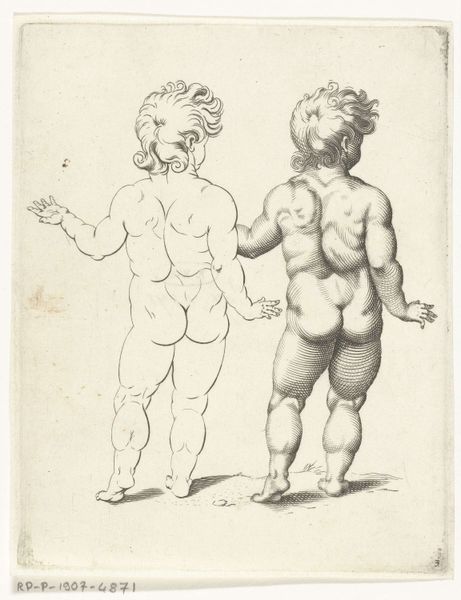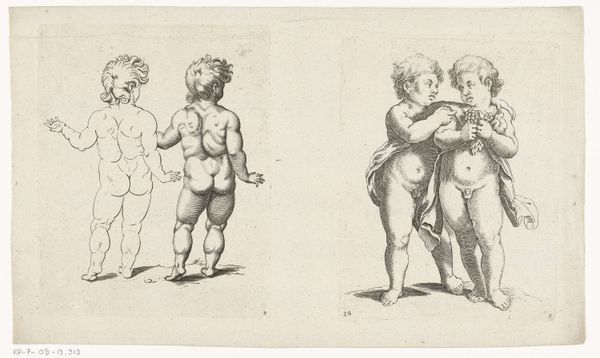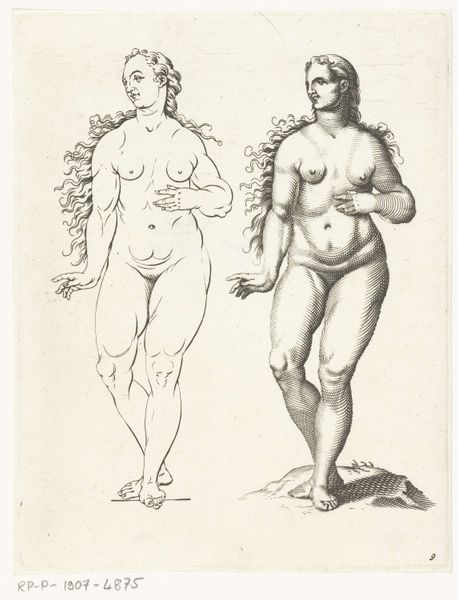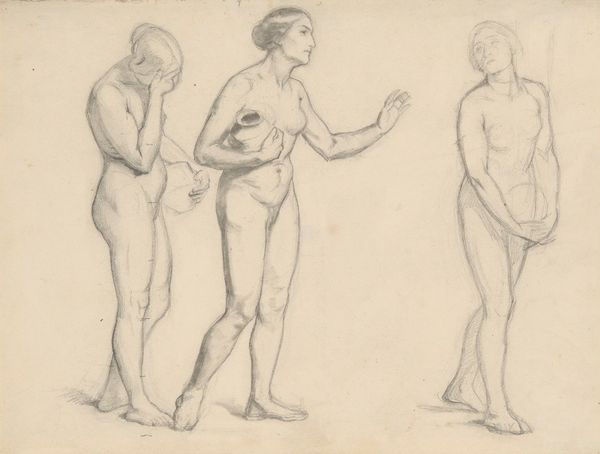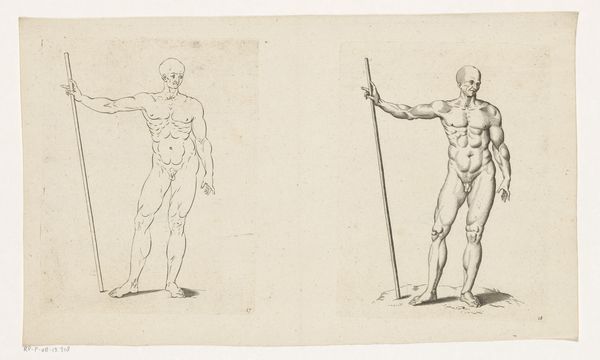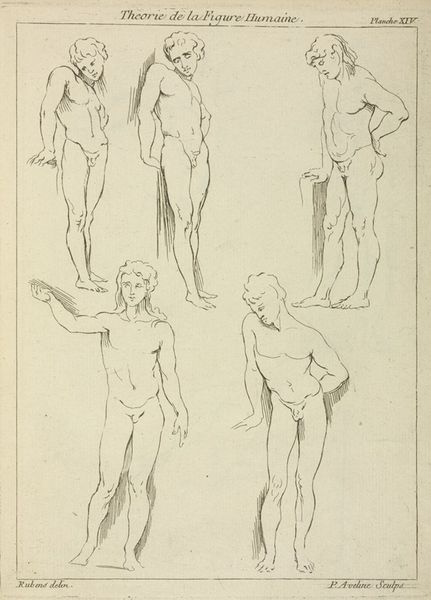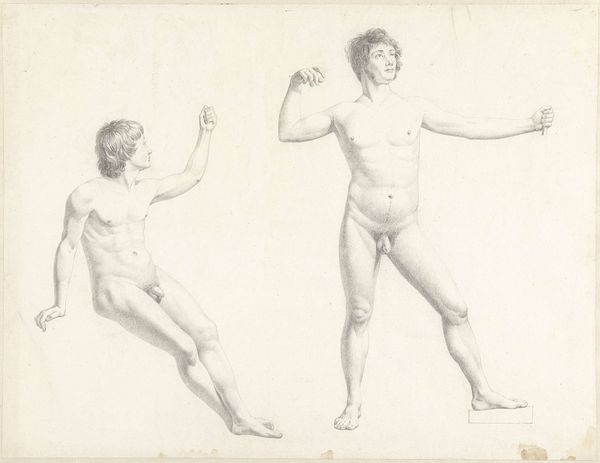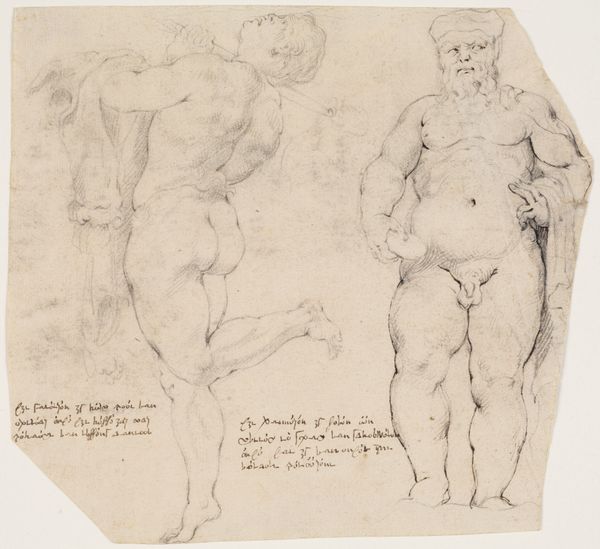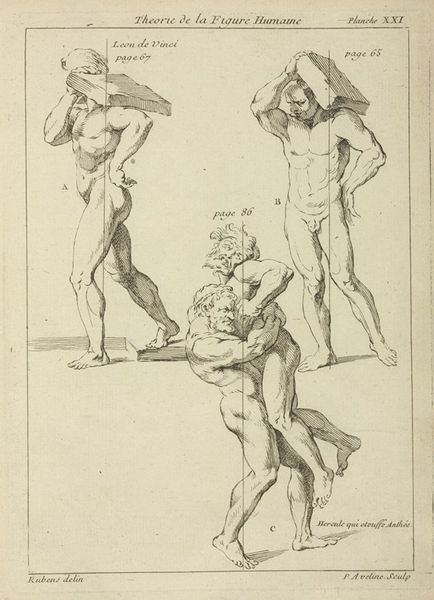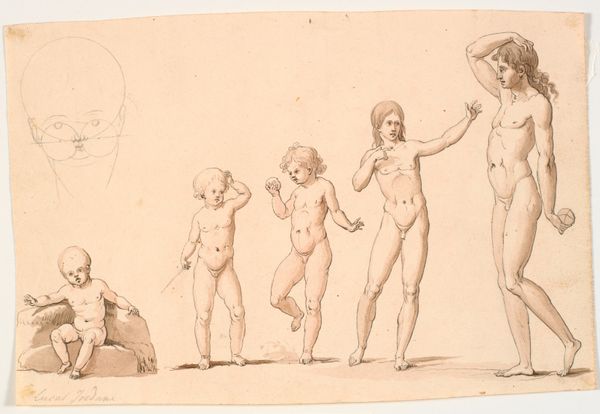
drawing, print, etching
#
portrait
#
drawing
#
baroque
# print
#
etching
#
figuration
#
academic-art
#
nude
Dimensions: height 160 mm, width 124 mm, height 159 mm, width 125 mm
Copyright: Rijks Museum: Open Domain
Curator: Here at the Rijksmuseum, we have before us an etching dating from around 1645-1706, titled "Vrouwelijk naakt, vooraanzicht en rugaanzicht" - or "Female Nude, Front and Back View," created by an anonymous artist. What’s your first take on it? Editor: The contrasting lines immediately strike me – almost Spartan in their rendering. The front view presents an open vulnerability, which the rigid posture seems to deny. Curator: Precisely! These representations resonate within a tradition where the female nude became a battleground for societal expectations and control. The piece is not merely a depiction, but an exploration of the male gaze and its implications on women's lived experiences, wouldn't you agree? Editor: To some extent, although, focusing on pure form, the academic drawing allows us to look closely at human anatomy. The composition—juxtaposing front and rear views— invites comparison, almost clinical in its pursuit of detail. Curator: I would counter by stating that its cool objectivity echoes the patriarchal framework from which it emerged. Articulations of objectivity were commonly tools used to codify and normalize particular power dynamics. This representation of the female body serves to place it under the objectifying eye of the scientific and artistic male elites, creating and reinforcing existing inequalities. Editor: But look how the etching technique captures subtle gradations of light and shadow to model the curves of the figures. The use of line emphasizes form and structure, highlighting musculature and bone beneath the skin, regardless of political interpretation. Curator: True, we observe classical beauty ideals at play, but also the complex interaction of gendered, raced, and classed social structures within which those aesthetics are shaped and interpreted. I appreciate that you mention the use of light to capture "curves", which has throughout art history been employed to signal out femininity. Editor: These considerations give added value to the visual impact of the piece. The anonymous artist challenges us to examine art-historical, aesthetic concerns around shape. Curator: And conversely, it begs us to reconsider whose perspective dominates historical canons and how we navigate inherited biases. Editor: It provides more questions than answers regarding art. Curator: And perhaps, that is exactly what art, even historical, should do.
Comments
No comments
Be the first to comment and join the conversation on the ultimate creative platform.
